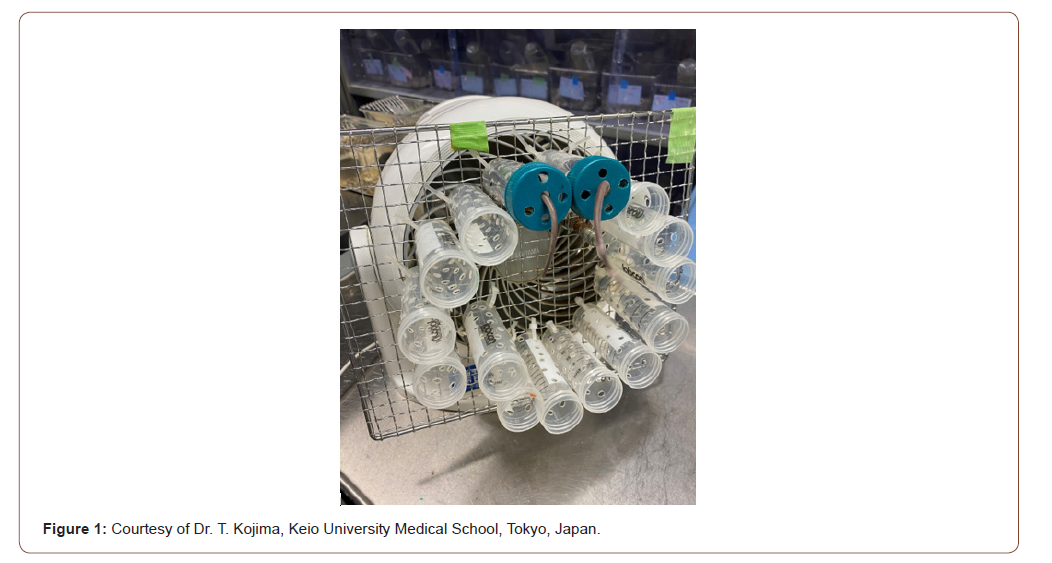Authored by Wolfgang G.K. Müller Lierheim*,
Opinion
Animals have similar ocular surface physiology, epithelial cell structure, immune response, innervation, and tear film structure like humans. Therefore, animals have served for decades in the development and clinical testing of topical eye drops for dry eye disease (DED) [1]. On the other hand, eye drops originally developed for human use are routinely used in the treatment of ocular diseases in animals.
Human patients see an ophthalmologist or optometrist because of ocular symptoms related to pain such as burning, stinging, or itching eyes or to instable vision. Globally multi millions of patients suffer from DED [2]. The Dry Eye Workshop distinguished symptomatic DED (with or without signs) from asymptomatic DED [3]. Significant discordance between signs and symptoms of dry eye has been reported [4,5]. The Asia Dry Eye Society recently concluded that subjective severity i.e. symptoms could be used as marker for therapeutic efficacy, but not for the purpose of classification [6].
The situation in the veterinary environment is different. Owners of animals are likely to see the veterinary clinic because their patients suffer from mucoid ocular discharge. The underlying reason may be a keratoconjunctivitis sicca (KCS), characterized by chronic inflammation of the lacrimal gland, conjunctiva, and cornea, but also an allergic keratoconjunctivitis (AKC) or a bacterial conjunctivitis or a combination [7]. KCS occurs in all animals but is commonly seen in dogs and diagnosed based on tear volume using the Schirmer I tear test (STT I). This test is known to be subject to fluctuations, can therefore only serve as an initial diagnostic marker, but not for control of therapeutic success [8-12]. Routinely the first step in the treatment of KCS is tear substitution by lubricant eye drops, the second step the treatment of chronic inflammation by cyclosporine (CsA) [13-15].
In humans damage of corneal nerves has caught growing attention over the past decade. Nerve damage has beside chronic inflammation been recognized as a second important pathomechanism underlying severe DED [16]. Nerve damage results in a reduction of trophic support for the corneal epithelium [17,18]. There is currently no therapy available addressing DED caused by nerve damage, and artificial tears provide incomplete relief from ocular pain in this situation [19]. Damage of peripheral nerve endings is among others associated with diabetes mellitus (DM). The cornea is the most densely innervated tissue of the body [20]. While the disease is progressing, corneal nerves are damaged in up to 70% of DM patients [21]. DM has also been reported in many animal species [22]. The incidence in dogs is about 1.2% and in cats about 0.6% [23,24]. It seems likely that DED is currently not adequately diagnosed and treated in these patients.
A plethora of hyaluronic acid (HA; hyaluronan; sodium hyaluronate) eye drops are available outside the United States as preferred tear substitutes for the treatment of DED. They differ in HA molecular weight and concentration [25]. HA behaves as a signal molecule in the human as well as animal body. While high molecular weight HA (HMWHA) suppresses inflammation low molecular weight HA (LMWHA) enhances inflammation [26]. A recent study on different molecular weight and concentration of HA demonstrated the suppression of the ocular immune response by HMWHA eye drops in mice under environmental stress conditions [27]. Mice develop ocular surface inflammation when exposed for five hours per day for three consecutive days to air from a fan (see Figure 1).

HMWHA has the potential to suppress the pain receptors of afferent nerves [28-30]. In a recent study on patients with very severe DED, HMWHA eye drops had been successfully applied as a substitute for autologous serum eye drops (ASED) in cases where even CsA eye drops had not resulted in acceptable relieve from symptoms [31]. The results of a multicenter randomized study on the use of HMWHA eye drops in patients suffering from severe DED will soon be published and will provide additional evidence on the potential future role of HMWHA eye drops in the treatment of DED.
The developing knowledge on the role of corneal nerves and the signaling function of HMWHA is likely to provide new insights and options also for dry eye treatment in the veterinary clinic.
To read more about this article...Open access Journal of Animal Husbandry & Dairy Science
Please follow the URL to access more information about this article
To know more about our Journals...Iris Publishers





No comments:
Post a Comment